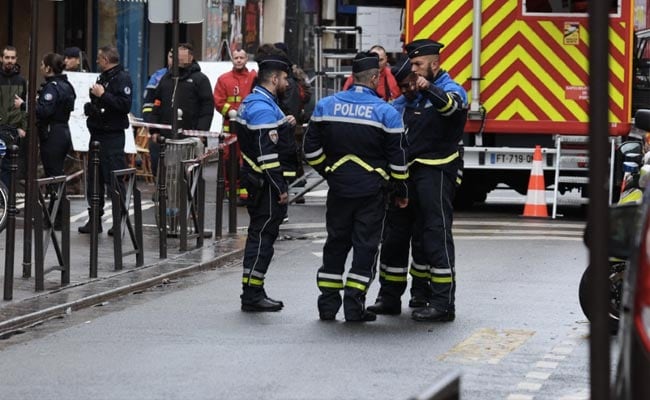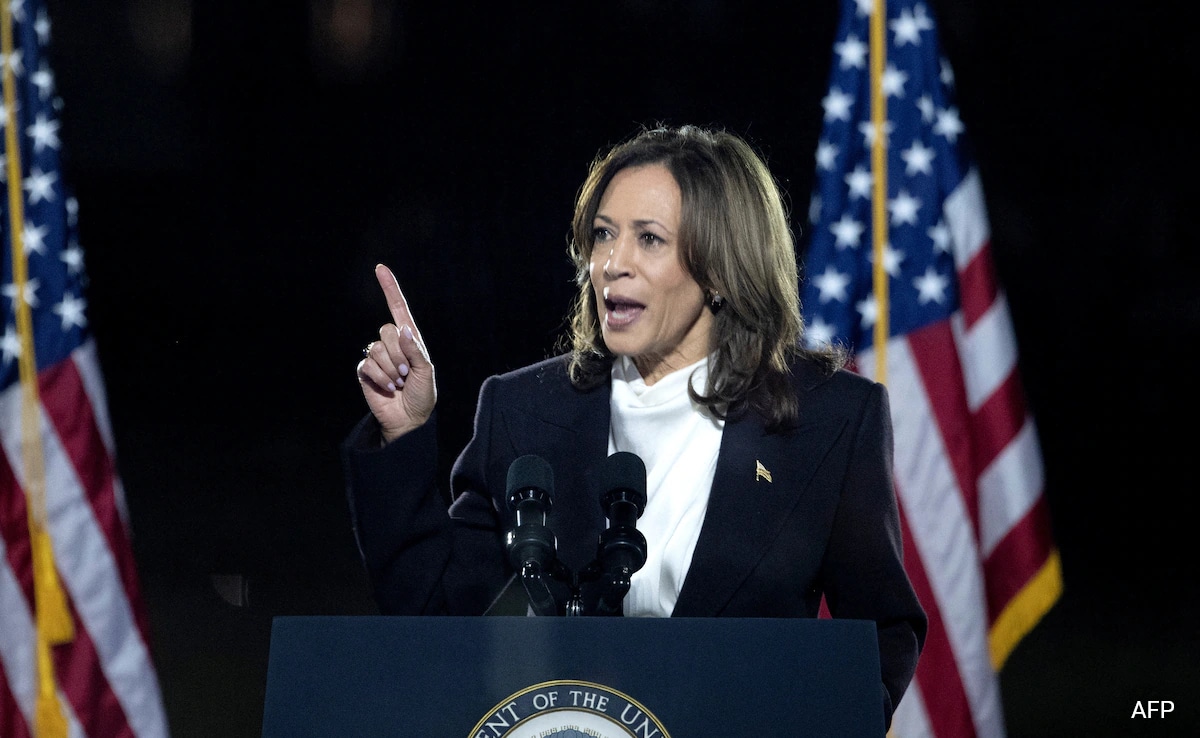Israel launched dozens of intense airstrikes across Lebanon’s northeastern farming villages on Friday, killing at least 52 people and wounding scores more, the Lebanese Health Ministry reported.
“In central Gaza, Palestinians recovered the bodies of 25 people killed in a barrage of Israeli aerial attacks that began Thursday (October 31, 2024),” hospital officials said.
The latest violence comes against the backdrop of a renewed diplomatic push by United States President Joe Biden’s administration, days before the presidential election, to reach temporary cease-fire deals.
Israel’s emergency services said seven people were injured before dawn Saturday (November 2, 2024) in an attack in the central town of Tira. “Three projectiles crossed into Israel from Lebanon,” Israel’s military said, and “some were intercepted”.
The Magen David Adom service said two of those injured were in moderate condition from the attack, and the others had milder injuries. A photo the service released showed damage to what appeared to be an apartment building.
Israel has stepped up its offensive against Hamas’ remaining fighters in Gaza, pulverizing areas in the north and raising fears of worsening humanitarian conditions for civilians still there.
In Lebanon, Israel has broadened its strikes in recent weeks to bigger urban hubs, like the town of Baalbek, home to 80,000 people, after initially targeting smaller border villages in the south, where Hezbollah conducts operations.
Iran-backed Hezbollah doubles as a major political party and provider of social services in Lebanon.
Hezbollah began firing rockets, drones and missiles from Lebanon into Israel in solidarity with Hamas immediately after the Hamas-led Oct. 7, 2023, attack on Israel, which triggered the war in Gaza. The yearlong cross-border fighting boiled over to full-blown war on Oct. 1, when Israeli forces launched a ground invasion of southern Lebanon for the first time since 2006.
In Lebanon’s Bekaa Valley — where small villages, olive groves and wineries nestled between the country’s mountain ranges had largely been spared the worst of Israeli bombardment until recently — Israel conducted a series of heavy airstrikes on Friday (November 1, 2024), killing at least 52 people, driving more families to flee with whatever they could carry and sending thick plumes of smoke over the horizon.
“Intensified Israeli airstrikes on and around the northeastern city of Baalbek after Israel issued evacuation warnings have prompted 60,000 people to flee, emptying nearby villages,” said Hussein Haj Hassan, a Lebanese lawmaker representing the region.
“In Lebanon, rescuers searched for survivors after airstrikes killed nine people and brought down a building that had housed 20 people in the town of Younine. Further Israeli strikes killed 12 people in the town of Amhaz and 31 others across at least a dozen villages in Lebanon’s northeast, bringing the total death toll to 52,” the Health Ministry said. The bombardment left 72 people wounded, the ministry added.
There was no immediate comment from Israel on the deadly strikes.
In Lebanon’s capital, Israeli planes pounded the southern suburb of Dahiyeh overnight and early Friday (November 1, 2024) for the first time in four days, spreading panic after a rare lull. The Israeli military, which warned residents to evacuate at least nine locations in Dahiyeh, said it hit Hezbollah weapons manufacturing sites and command centers.
There were no reports of casualties from Dahiyeh, where fears of Israeli bombings drive a mass outflow of residents each night.
Bulldozers rumbled through clouds of dust and smoke on Friday (November 1, 2024), clearing rubble from the pulverized roads where Israeli warplanes had reduced dozens of buildings to their skeletal remains.
Formerly home to families and businesses, mid-rise apartment blocks were left open to the breeze, walls blown off and furniture buried. Hezbollah supporters in several locations raised the group’s bright yellow banner atop the rubble.
Since the conflict between Israel and Hezbollah erupted in 2023, more than 2,897 people have been killed and 13,150 wounded in Lebanon, the Health Ministry reports, not including Friday’s (November 1, 2024) rising toll. Health authorities say that a quarter of those killed were women and children.
Overall, United Nations agencies estimate that Israel’s ground invasion and bombardment of Lebanon has displaced 1.4 million people. Residents of Israel’s northern communities near Lebanon, roughly 60,000 people, have also been displaced for more than a year.
Hezbollah has kept up firing rockets into northern Israel, with projectiles launched from Lebanon on Thursday (October 31, 2024) crashing into agricultural areas and killing seven people, including four Thai farm workers.
Israel also pressed on with its bombardment of Gaza on Friday (November 1, 2024), where a barrage of airstrikes hit central Gaza’s Nuseirat refugee camp and killed at least 21 Palestinians — including an 18-month-old and his 10-year-old sister — according to health officials at the nearby Al-Aqsa Martyrs Hospital.
“Israeli strikes also hit a motorcycle in Zuwaida and a house in Deir al-Balah, killing four more people,” hospital officials said, bringing Friday’s (November 1, 2024) overall death toll in Gaza to 25.
Israel said it targeted Hamas infrastructure and a militant operating near the Nuseirat refugee camp, but did not comment on the strikes outside the camp. It said it was aware of reports of civilian casualties and was investigating. In a separate announcement, the Army said an airstrike on a vehicle in Gaza’s southern town of Khan Younis killed a senior member of the Hamas political bureau, Izz al-Din Kassab, and his assistant, Ayman Ayesh.
Hamas confirmed the death of Kassab, who was not well known to the public. Israel alleged he was a coordinator between militant groups in Gaza.
As American diplomats left the region after a flurry of meetings with Israeli officials, there were no signs of a breakthrough on a cease-fire in either Lebanon or Gaza.
On Friday (November 1, 2024), Hamas doubled down on its longstanding demands for a permanent cease-fire and complete Israeli withdrawal from Gaza, saying Israel offered only a temporary pause in the war and an increase in aid shipments in the latest negotiations. There was no immediate comment from Israel.
“The proposals do not meet the comprehensive needs of the Palestinian people in terms of security, stability, relief, and reconstruction,” said senior Hamas official Bassem Naem, speaking first to the Hamas-run Al Aqsa TV before confirming the group’s position to The Associated Press.
Israel’s blistering war in Gaza has killed more than 43,000 Palestinians since October 7, 2023, when Hamas militants killed roughly 1,200 people in Israel and took some 250 hostages back to Gaza.

Health officials inside Hamas-run Gaza do not distinguish between civilians and combatants, but say more than half of the dead in the enclave are women and children.
Israeli forces have recently shifted their attention to Hamas militants, who they say have regrouped in northern Gaza, renewing an offensive that has trapped tens of thousands of people under intense bombardment without enough food or water.
Israeli airstrikes have repeatedly hindered an emergency polio vaccination campaign, which the World Health Organization announced it planned to finally resume on Saturday (November 2, 2024) — but only in Gaza City. Towns further north, like Jabaliya, Beit Lahiya and Beit Hanoun, remain inaccessible as Israel tightens its siege.
The U.N. and other humanitarian organizations warned Friday (November 1, 2024) that “the situation unfolding in north Gaza is apocalyptic,” citing Israel’s denial of humanitarian aid to the area, military raids on hospitals, airstrikes on shelters and obstruction of Palestinian rescue teams who struggle to help survivors after Israeli attacks.
Published – November 02, 2024 10:49 am IST













